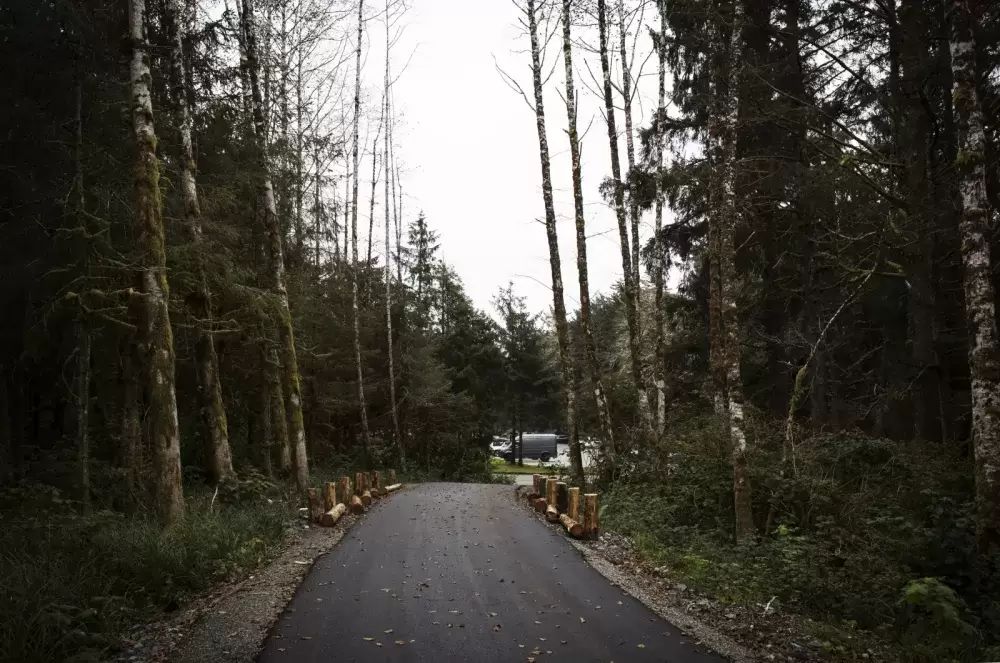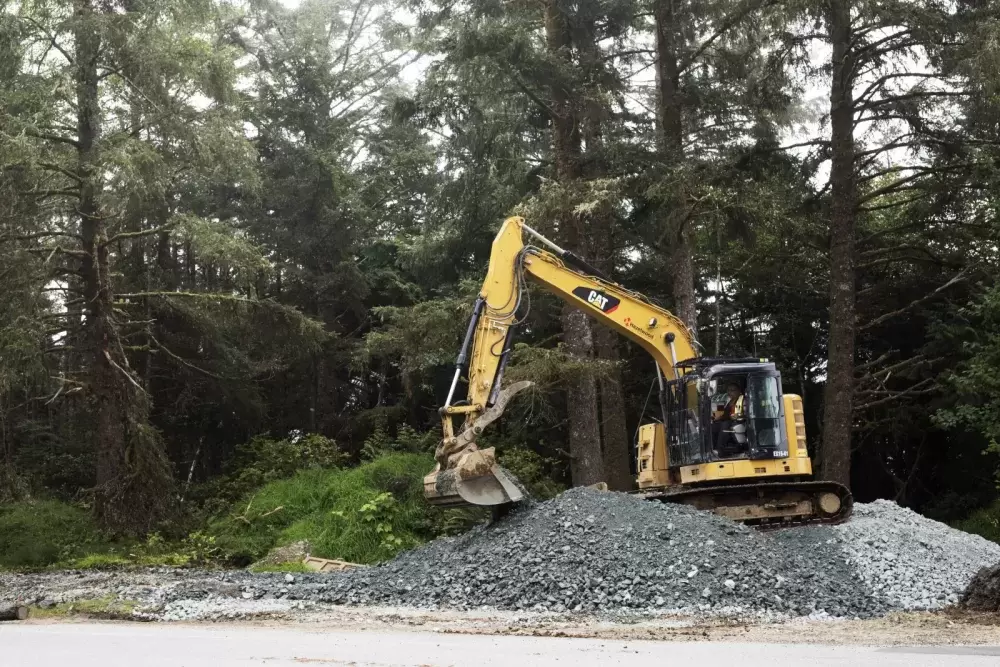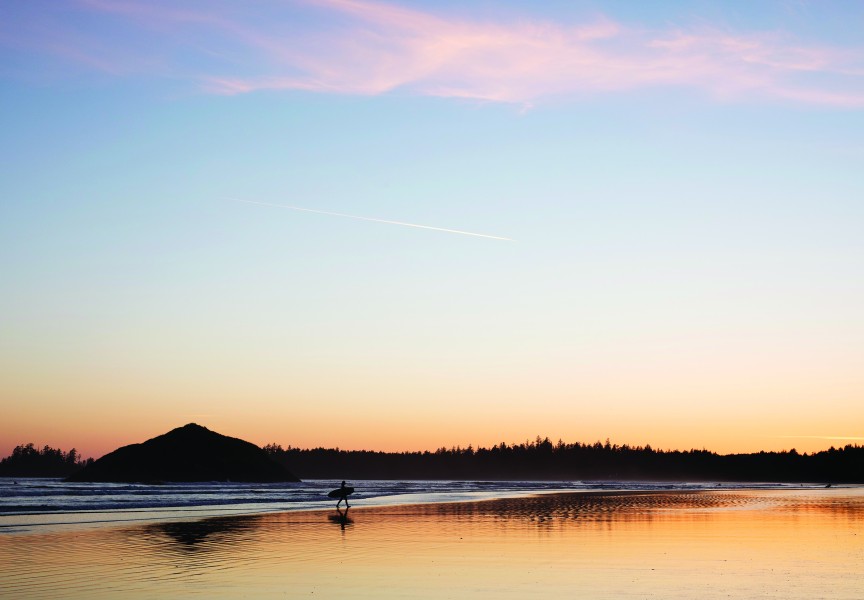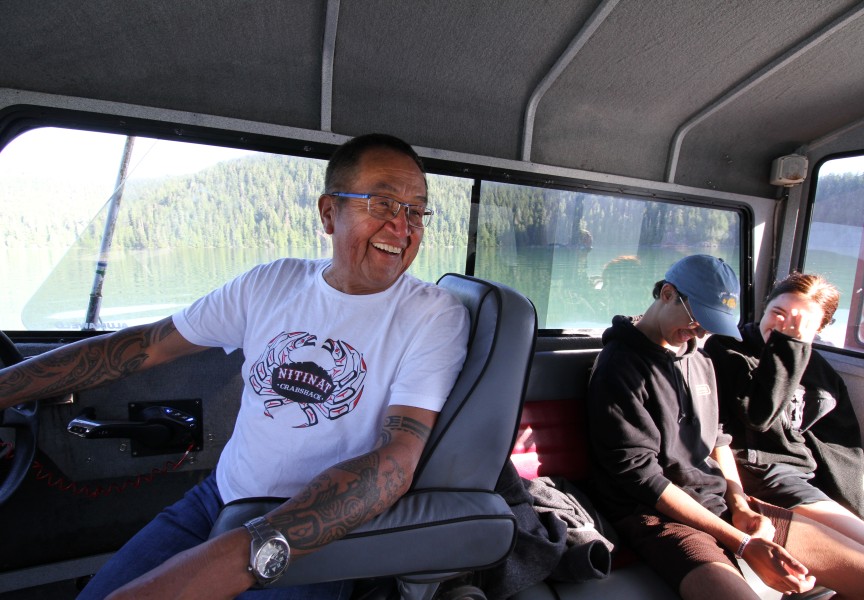Parks Canada is continuing to make progress on building ʔapsčiik t̓ašii (pronounced ups-cheek ta-shee), the 25-kilometer multi-use pathway that extends along Long Beach, in the Pacific Rim National Park Reserve.
Although around 95 per cent of the pathway has been paved, it remains an active construction zone and is not yet officially open.
The next step is for Parks Canada to build the Wayii, an escarpment area overlooking Long Beach located between Green Point Campground and the Long Beach parking lot. Named by the Elders Working Group, it translates to “hill.” Work on this section of the project will begin this summer and is anticipated to be complete in Fall 2021.
Additional work along the pathway will continue through the installation of information panels, rest areas, cultural information and a Highway 4 crossing near Radar Hill Road.
Completion for the $51.1 million pathway remains on target for 2022.
This past summer, Parks Canada contributed wood that was cleared during the construction of ʔapsčiik t̓ašii to Yuułuʔiłʔatḥ and Tla-o-qui-aht First Nation.
In collaboration with the youth warrior program, Yuułuʔiłʔatḥ is using the timber to build boardwalks for a new hitaču trail.
The Indigenous Youth Mountain Bike Program (IYMBP), a non-profit organization that aims to help young people build employment skills and connect with their traditional territories through trail building, worked with around 12 youth from the warrior program.
“It’s always really fun watching kids get into trail building,” said Patrick Lucas, IYMBP founder. “Their first reaction is, ‘Why are we here? Why are we doing this? This is just hard and gruelling.’ And then as they see the trail emerge behind them and see what they’re accomplishing, you can see the kids starting to get really proud of what they’re doing and what they’re building. They see their elders coming out and walking the trail and talking about it and [it] becomes a real source of pride for them.”
The trail, which leads from hitaču to Itatsoo Lake, is around 750-metres long and half-way finished. The long-term goal is to build a loop trail system which will create opportunities for outdoor recreation and allow community members to reconnect with their land.
While it was mainly Yuułuʔiłʔatḥ youth who worked on the trail, Tla-o-qui-aht membes were invited to participate in workshops, such as chainsaw training.
“The hitaču trail project has been an exciting venture for the youth, and for all of those involved,” said the Yuułuʔiłʔatḥ government. “The youth have gained significant on-the-land skills and tools they can use for many years to come and share with their peers.”
Most of the timber that Tla-o-qui-aht First Nation received can only be used as firewood, but Saya Masso, Tla-o-qui-aht First Nation tribal administrator, said larger pieces will be kept aside for cultural use, such as welcome poles.
Lucas said he hopes to begin working with youth on the second-half of the hitaču trail in April or May, but it will depend on COVID-19 restrictions.
“It was a tough year,” said Lucas. “A lot of the kids were dealing with a lot of stuff. Working outside on the trail gave them a chance to work through some of those issues and spend time in the woods away from everything that was happening.”








